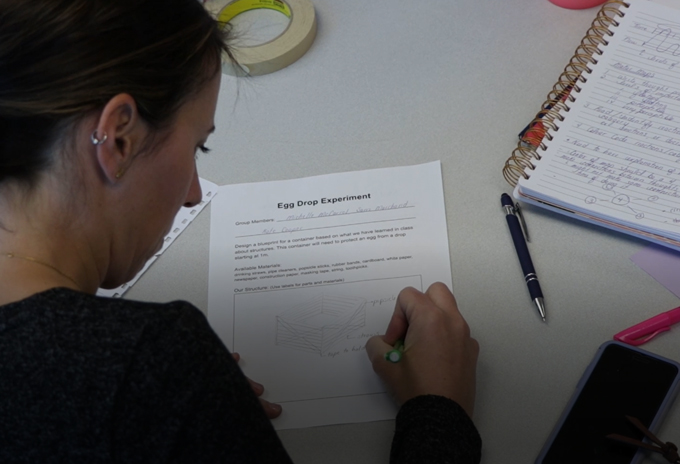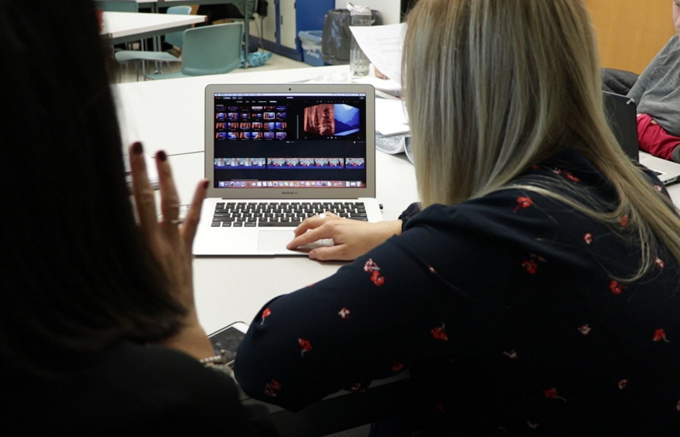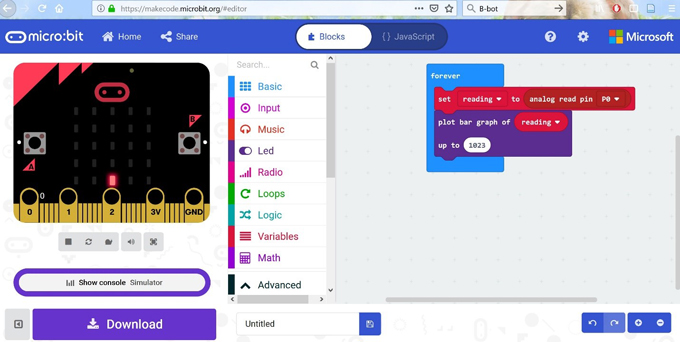Ask any teacher and they’ll likely agree that one of the most significant challenges in their work is implementing innovative material using new technologies or modalities they have not yet learned or mastered. In a recent study I conducted at Mount Saint Vincent University in Atlantic Canada, I asked seasoned in-service teachers to document their thought processes as they engaged in maker activities that were new to them. I was interested in finding out what happens when teachers engage in makerspace literacy activities.
Most teacher participants in this maker study agreed that the professional development they receive, usually once or twice a year, is insufficient to support them in maker curriculum implementation and development throughout the school months. Ideally, professional development should be ongoing, and schools should support maker activities with appropriate infrastructure. With more studies documenting how materials present both challenges and opportunities for affective, cognitive, and sensory learning, it makes sense to find ways to support teachers in maker-driven initiatives.
Following are three examples teachers can apply in their classroom settings. You might explore some of these activities and related technologies at home this summer as you gear up for the new school year.
Maker experiments, design, and genius hour
 If you are inclined to take up material making and work with pencil design and planning, there are benefits to embracing drawing and building as multi-step maker activities. In the picture above, a participant designs a wood stick box and documents the materials she plans on using in her unit on Genius Hour with fifth graders. In this activity, planning and drafting structures become integral parts of making.
If you are inclined to take up material making and work with pencil design and planning, there are benefits to embracing drawing and building as multi-step maker activities. In the picture above, a participant designs a wood stick box and documents the materials she plans on using in her unit on Genius Hour with fifth graders. In this activity, planning and drafting structures become integral parts of making.
After this exercise, students chose and tested the materials with which to create this box, as the experiment was meant to test whether an uncooked egg would crack depending on the height at which it was dropped. While this type of maker activity does not require technology, it does mobilize maker skills such as design, creativity, and problem-solving.
Video making and editing
 Other kinds of maker activities require beginner technology use. There are many accessible video recording and editing software products that teachers find useful without specialized training. StopMotion, pictured below, entails iPad play and is ideal for enabling both teachers and students to creatively animate ideas. iMovie is another editing software that requires little prior knowledge for effective use. In the screen caption below, two teachers are making edits to their video—their project was centered around creating tutorials with primary-grade children (how to make apple sauce).
Other kinds of maker activities require beginner technology use. There are many accessible video recording and editing software products that teachers find useful without specialized training. StopMotion, pictured below, entails iPad play and is ideal for enabling both teachers and students to creatively animate ideas. iMovie is another editing software that requires little prior knowledge for effective use. In the screen caption below, two teachers are making edits to their video—their project was centered around creating tutorials with primary-grade children (how to make apple sauce).
Coding
 Coding is also a popular maker space activity. A program called Scratch is one of the most popular coding tools, but software updates in January 2019 introduce a series of changes that require attentive adaptation. Watching tutorials and taking notes can provide some support for learning Scratch, and for those using Chromebooks in your classrooms, you will be pleased to know that Scratch 3.0 is now supported on this platform. Other Chromebook-supported software, such as Blockly or micro:bit (pictured below), might prove to be convenient alternatives to Scratch. Your choice of programming language will ultimately depend on resources, skill level, and adaptability of the software.
Coding is also a popular maker space activity. A program called Scratch is one of the most popular coding tools, but software updates in January 2019 introduce a series of changes that require attentive adaptation. Watching tutorials and taking notes can provide some support for learning Scratch, and for those using Chromebooks in your classrooms, you will be pleased to know that Scratch 3.0 is now supported on this platform. Other Chromebook-supported software, such as Blockly or micro:bit (pictured below), might prove to be convenient alternatives to Scratch. Your choice of programming language will ultimately depend on resources, skill level, and adaptability of the software.
Remember, maker education is all about trying out new things in a fun and accessible environment. Though you may be moderating the activity as the teacher or leader, do not be afraid to learn with your students—embrace the unknown and discover the joys of learning with technology.
Teacher resources
- Create 2Learn compiles resources for teachers who want to take up maker education for the first time and are unsure how to start.
- LEGO Education's engaging, standards-based lessons help inspire curious and creative minds.
- Scratch for Educator offers guides to help you prepare and run Scratch classes and workshop as well as plans, activities, and strategies for introducing creative computing in the classroom.
Amélie Lemieux is assistant professor of literacy and technology at Mount Saint Vincent University, where she researches digital literacies and makerspace engagement through mapping methodologies. She can be reached on Twitter at @ame_lemieux. For recent scholarship on maker education, please visit www.amelielemieux.com
This article is part of a series from the International Literacy Association Technology in Literacy Education Special Interest Group (TILE-SIG).